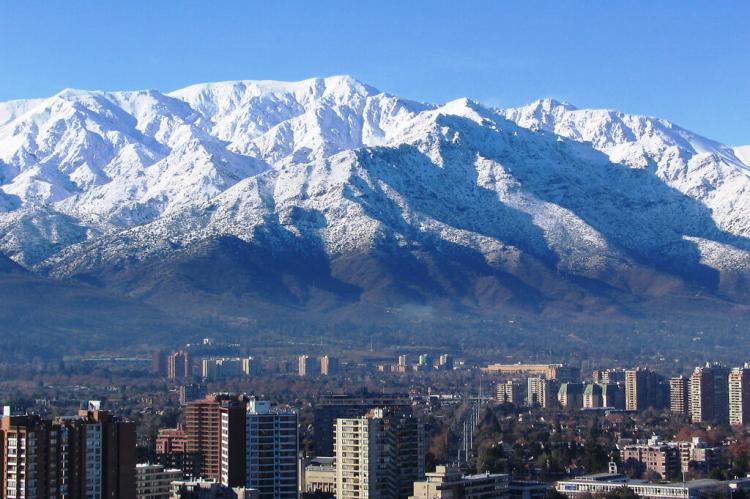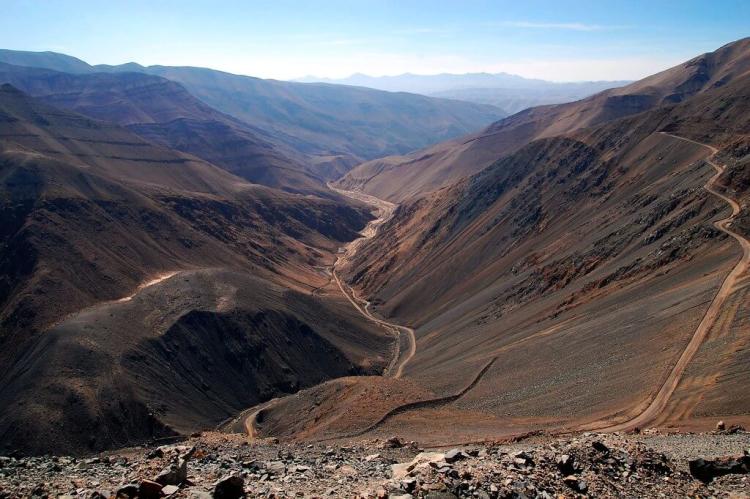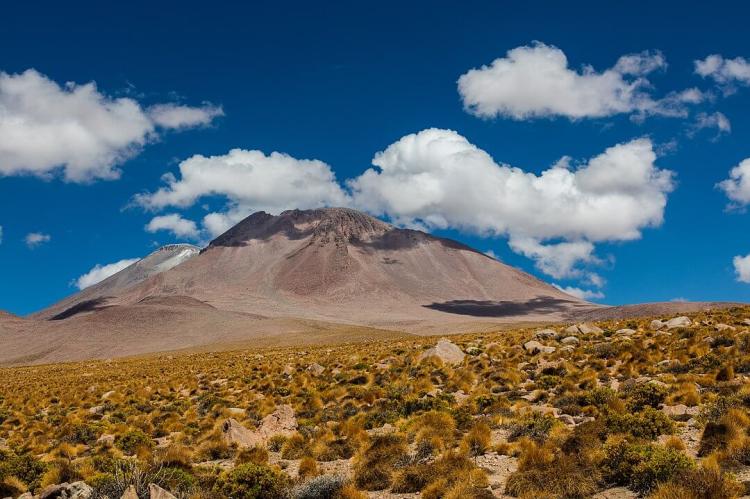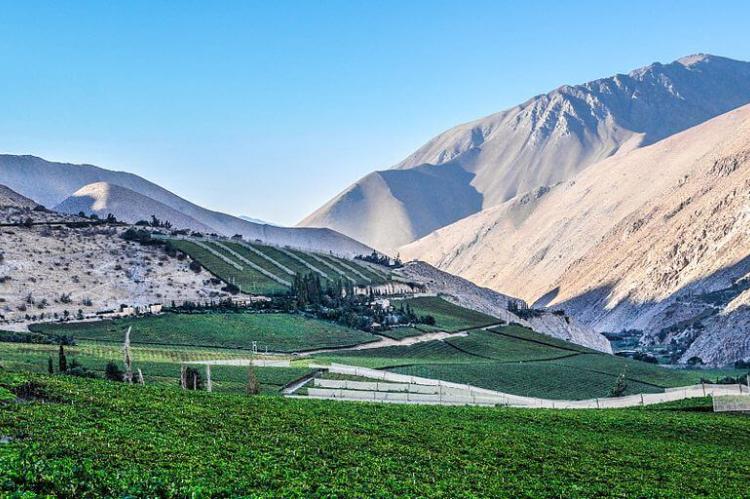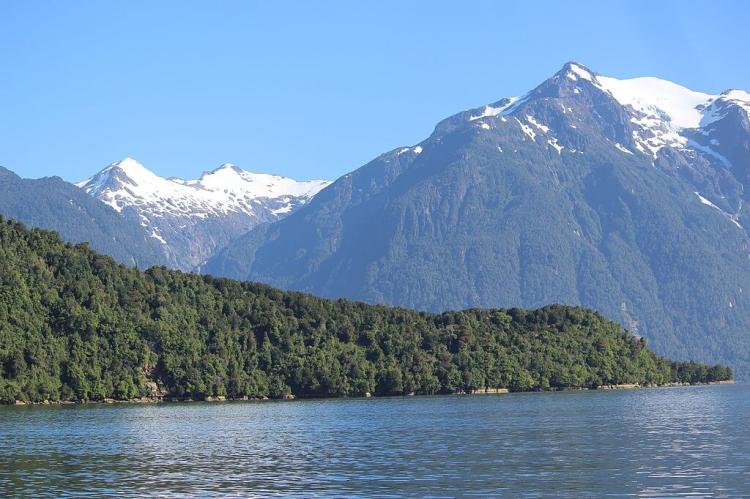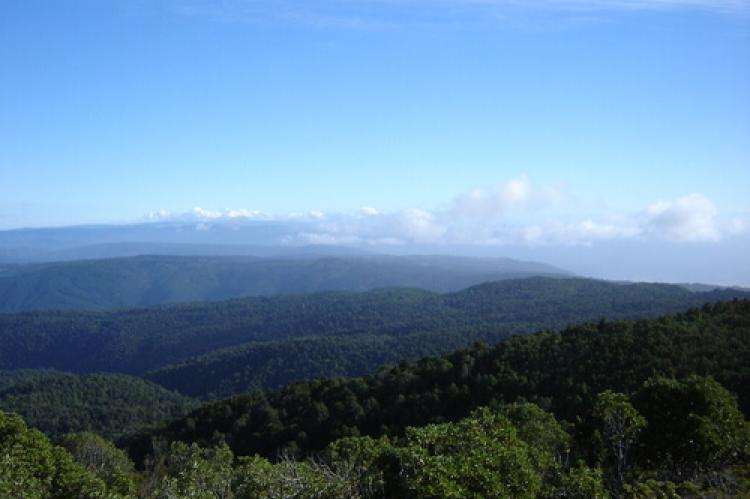Mountain Ranges and Major Peaks of Chile
Chile is known for its diverse mountainous landscapes, a prominent feature of its geography. The mountain ranges of Chile offer a wide range of ecosystems, geological formations, and cultural significance. They contribute to the country's stunning landscapes, unique ecology, and cultural heritage.
Mountain Ranges and Major Peaks of Chile
Chile is known for its diverse mountainous landscapes, a prominent feature of its geography. The mountain ranges of Chile offer a wide range of ecosystems, geological formations, and cultural significance. They contribute to the country's stunning landscapes, unique ecology, and cultural heritage.
These are the major mountain ranges of Chile, separated into Andes ranges and other ranges, each contributing to the country's stunning landscapes, unique ecosystems, and cultural heritage.
Andes Mountains
The Andes, the most extended mountain range in the world, run along Chile's entire eastern border, stretching from north to south. Towering peaks, deep valleys, and glaciers characterize the Chilean Andes. This iconic range offers diverse landscapes, from the arid deserts in the north to the lush temperate rainforests in the south. Several of the highest peaks in the Americas are found in this range.
-
Northern Chilean Andes: The Northern Chilean Andes, also known as the Andes del Norte, is Chile's northernmost section of the Andes mountain range. This region stretches from the border with Peru in the north to about the Coquimbo Region in the south. The Northern Chilean Andes boast unique geological features, diverse landscapes, and rich cultural history.
-
Central Chilean Andes: The Central Andes are a section of the Andes that pass through the central part of Chile. This region features impressive volcanoes, such as Villarrica at 2,847 m (9,341 ft) and Llaima at 3,125 m (10,253 ft). The Central Andes offer a mix of mountainous terrain and fertile valleys, contributing to Chile's agricultural productivity.
-
Patagonian Andes: In the southern part of Chile, the Andes continue as the Patagonian Andes, offering breathtaking scenery, including vast glaciers, fjords, and pristine lakes. The Patagonian Andes are known for their rugged and remote landscapes, attracting outdoor enthusiasts, hikers, and nature lovers. Torres del Paine National Park, a UNESCO Biosphere Reserve, is one of the main attractions in this region.
Major Peaks of the Chilean Andes:
-
Monte San Valentin, 4,058 m (13,314 ft)
-
Cerro Paine Grande, 2,884 m (9,462 ft)
-
Cerro Macá, c.2,300 m (7,546 ft)
-
Monte Darwin, c.2,500 m (8,202 ft)
-
Volcan Hudson, c.1,900 m (6,234 ft)
-
Cerro Castillo Dynevor, c.1,100 m (3,609 ft)
-
Mount Tarn, c.825 m (2,707 ft)
-
Polleras, c.5,993 m (19,662 ft)
-
Acamarachi, c.6,046 m (19,836 ft)
Along the border between Argentina and Chile:
-
Cerro Bayo, 5,401 m (17,720 ft)
-
Cerro Fitz Roy, 3,375 m (11,073 ft) or 3,405 m, Patagonia, also known as Cerro Chaltén
-
Cerro Escorial, 5,447 m (17,871 ft)
-
Cordón del Azufre, 5,463 m (17,923 ft)
-
Falso Azufre, 5,890 m (19,324 ft)
-
Incahuasi, 6,620 m (21,719 ft)
-
Lastarria, 5,697 m (18,691 ft)
-
Llullaillaco, 6,739 m (22,110 ft)
-
Maipo, 5,264 m (17,270 ft)
-
Marmolejo, 6,110 m (20,046 ft)
-
Ojos del Salado, 6,893 m (22,615 ft)
-
Olca, 5,407 m (17,740 ft)
-
Sierra Nevada de Lagunas Bravas, 6,127 m (20,102 ft)
-
Socompa, 6,051 m (19,852 ft)
-
Nevado Tres Cruces, 6,749 m (22,142 ft) (south summit) (III Region)
-
Tronador, 3,491 m (11,453 ft)
-
Tupungato, 6,570 m (21,555 ft)
-
Nacimiento, 6,492 m (21,299 ft)
Along the border between Bolivia and Chile:
-
Acotango, 6,052 m (19,856 ft)
-
Michincha, 5,305 m (17,405 ft)
-
Iru Phutunqu, 5,163 m (16,939 ft)
-
Licancabur, 5,920 m (19,423 ft)
-
Olca, 5,407 m (17,740 ft)
-
Parinacota, 6,348 m (20,827 ft)
-
Paruma, 5,420 m (17,782 ft)
-
Pomerape, 6,282 m (20,610 ft)
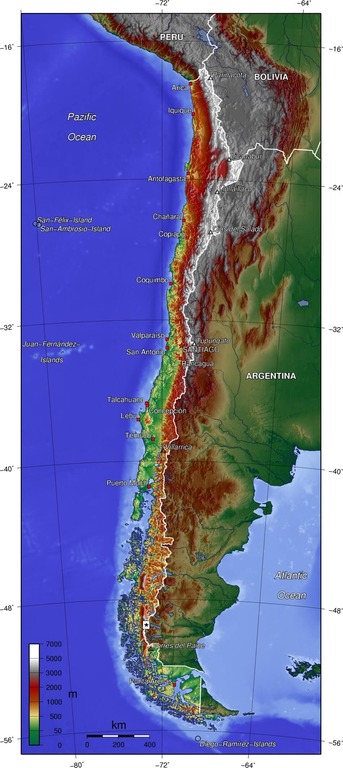
Topographical map of Chile.
Other Mountain Ranges
-
Norte Chico: Norte Chico is a mountainous region in northern Chile featuring various mountain ranges and valleys. The area is known for its copper mining, and the Elqui Valley is renowned for its clear skies, making it an excellent location for stargazing.
-
Cordillera de Domeyko: The Cordillera de Domeyko is a mountain range in northern Chile, west of Salar de Atacama, that runs parallel to the Andes for approximately 600 km (375 mi). It is an arid region with sparse vegetation and interesting geological formations. It is known for its mineral wealth and copper deposits.
-
Cordillera Nevado Tres Cruces: The Cordillera Nevado Tres Cruces is a subrange of the Andes in northern Chile, near the border with Argentina, known for its high-altitude lagoons, volcanic landscapes, and geologic formations. It is protected by Nevado Tres Cruces National Park and is named for its most prominent feature, Nevado Tres Cruces, a massif with three adjacent peaks.
-
Coastal Range (Cordillera de la Costa): The Coastal Range runs parallel to Chile's Pacific coast. While not as tall as the Andes, this range offers beautiful coastal views, lush forests, and diverse ecosystems. The Coastal Range is an important water source and supports numerous rivers and streams.
-
Precordillera: Precordillera refers to the foothills of the Andes in central Chile. Lower mountains and rolling hills characterize this region. The area offers opportunities for trekking and enjoying the mountain landscapes near urban centers like Santiago.
-
Cordillera de Claudio Gay: The Cordillera de Claudio Gay is a subrange of the Andes in central Chile. Rugged mountains and deep valleys characterize it.
-
Cordillera Pelada: The Cordillera Pelada is a subrange of the Andes in the Los Ríos Region of southern Chile, featuring high-altitude plateaus and rocky terrain.
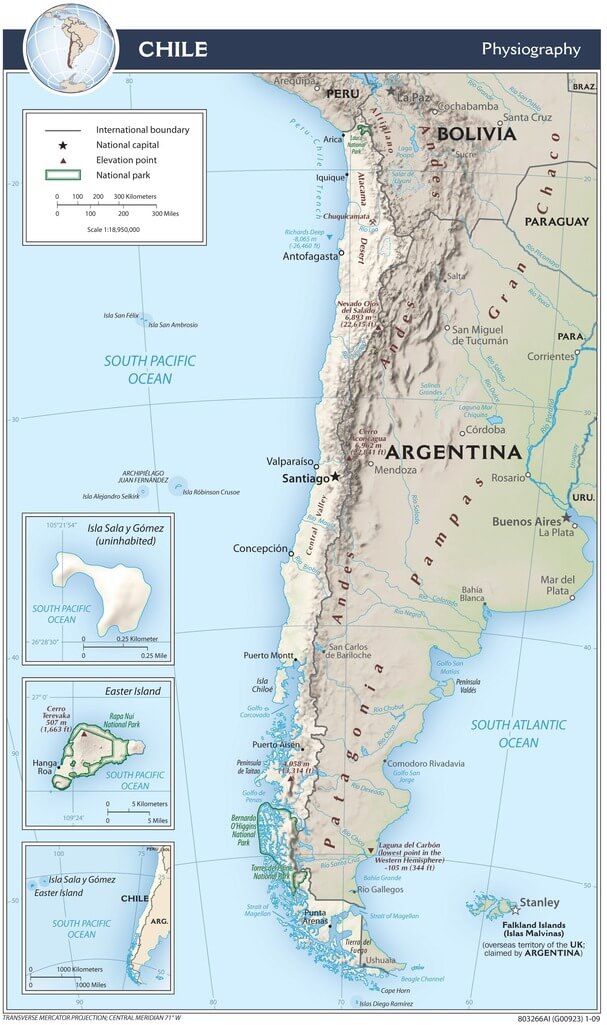
Chile physiographic map.
